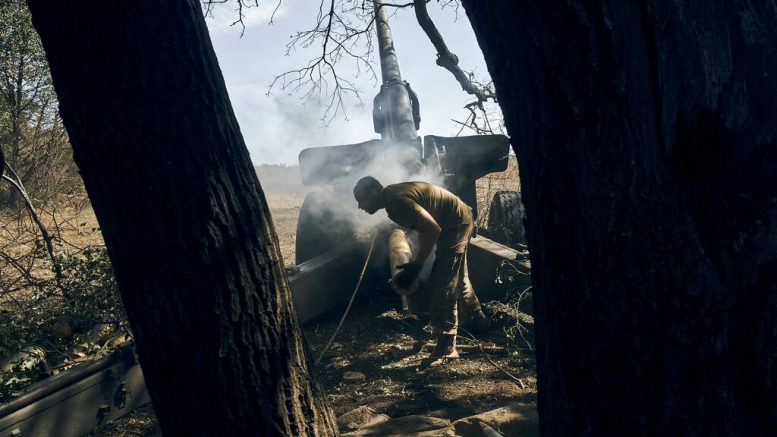KYIV, Ukraine (AP) — Fears grew Tuesday for Europe’s largest nuclear power plant as shelling around it continued, a day after the facility was again knocked off Ukraine’s electricity grid and put in the precarious position of relying on its own power to run safety systems.
Repeated warnings from world leaders that fighting around the Zaporizhzhia plant has put it in an untenable situation that could lead to a nuclear catastrophe have done little to stem the hostilities. Russian-installed officials accused the Ukrainian forces of shelling the city where the plant is located on Tuesday, hours after the Ukrainians said Kremlin forces attacked a city across the river.
Both sides have traded such accusations since Russian troops seized the plant early in the war. With the danger rising, an International Atomic Energy Agency team finally traveled to the plant last week, and inspectors are expected to report what they found to the U.N. Security Council later in the day.
Two inspectors remain at the plant, which is run by Ukrainians workers, and Ukrainian presidential adviser Mykhailo Podolyak applauded that decision.
“There are Russian troops now who don’t understand what’s happening, don’t assess the risks correctly,” Podolyak said. “There is a number of our workers there, who need some kind of protection, people from the international community standing by their side and telling (Russian troops): ‘Don’t touch these people, let them work.’”
But that appears to have done little to lessen the risks. On Monday, the IAEA said Ukrainian authorities reported that the plant’s last transmission line was disconnected to allow workers to put out a fire caused by shelling.
“The line itself is not damaged, and it will be reconnected once the fire is extinguished,” the IAEA said.
In the meantime, the plant’s only remaining operational reactor would “generate the power the plant needs for its safety and other functions,” the agency said.
Mycle Schneider, an independent analyst in Canada on nuclear energy, said that means the plant was likely functioning in “island mode,” producing electricity just for its own operations.
“Island mode is a very shaky, unstable, and unreliable way to provide continuous power supply to a nuclear plant,” Schneider said.
It was just the latest incident that fueled fears of a potential nuclear disaster in a country still haunted by the world’s worst nuclear accident at Chernobyl. Experts say the reactors at Zaporizhzhia are designed to withstand natural disasters and even aircraft crashes, but the unpredictable fighting around the plant had repeatedly threatened to disrupt critical cooling systems, raising the risk of a meltdown.
Russian-installed officials in the Zaporizhzhia region on Tuesday accused the Ukrainian forces of shelling Enerhodar, the city where the plant is located, and damaging a power line close to the plant.
Russian state news agency RIA Novosti reported, citing its correspondent on the ground, that the power was off in Enerhodar on Tuesday and sounds of explosions could be heard.
Meanwhile, Ukraine’s presidential office said that Russian forces shelled residential buildings in Nikopol, a city across the Dnieper river from the Zaporizhzhia plant. Two people were wounded and a school, a kindergarten and some 30 buildings were damaged, the office said.
Russian shelling elsewhere killed at least three civilians, the statement said.
In the southern Kherson region, occupied by the Russians since early on in the war, the Ukrainian army continued its counteroffensive, destroying Russia’s logistical centers. A pontoon bridge was blown up overnight and a command center was hit, as well as two checkpoints.
In the eastern city of Sloviansk, workers with the Ukrainian Red Cross Society swept up debris Monday from a second rocket attack on its premises in a week. Nobody was hurt in either attack, said Taras Logginov, head of the agency’s rapid response unit. He blamed Russian forces and called the attacks war crimes.
In a row of apartment buildings across the road, the few residents who haven’t evacuated sawed sheets of plywood to board up their shattered windows.
Henadii Sydorenko sat on the porch of his apartment building for a break. He said he’s not sure whether to stay or leave, torn between his responsibility of taking care of three apartments whose owners have already evacuated and the increasing fear of the now frequent shelling.
“It’s frightening,” the 57-year-old said of the shelling. “I’m losing my mind, little by little.”
For more national and world news, visit TheDerrick.com.




































